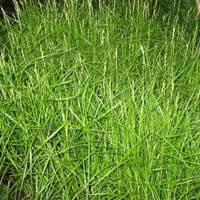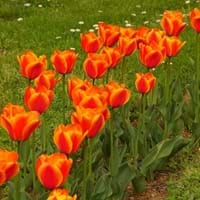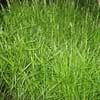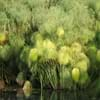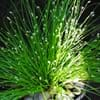Life Span
Perennial
Annual
Type
Sedge or Rush
Bulb or Corm or Tuber
Origin
North-Central United States, Canada
Hybrid origin, Europe, Turkey, Iraq, Iran, Asia, China
Types
Not Available
Parrot Tulips, Triumph Tulips, Darwin Hybrid Tulips
Number of Varieties
Not Available
Habitat
Moist Soils
Mountains, Temperate Regions
USDA Hardiness Zone
3-8
4-8
Sunset Zone
4, 5, 6, 7, 8, 9, 14, 15, 16, 17, 18, 19, 20, 21, 22, 23, 24
21,22
Habit
Clump-Forming
Clump-Forming
Flower Color
Gold, Brown
White, Yellow, Red, Green, Purple, Orange, Pink, Rose, Coral, Peach, Burgundy, Plum, Bronze
Flower Color Modifier
Bicolor
Bicolor
Fruit Color
Non Fruiting Plant
Green, Tan
Leaf Color in Spring
White, Green
Green
Leaf Color in Summer
White, Green
Light Green
Leaf Color in Fall
Yellow
Several shades of Green
Leaf Color in Winter
Not Available
Light Green
Leaf Shape
Acicular
Oblong
Plant Season
Spring, Summer, Fall
Spring
Sunlight
Full Sun, Partial Sun, Partial shade
Full Sun, Partial Sun
Type of Soil
Loam
Loam, Sand
The pH of Soil
Acidic, Neutral
Neutral
Soil Drainage
Average
Well drained
Bloom Time
Late Spring, Early Summer, Summer
Early Spring, Spring, Late Spring
Tolerances
Drought
Drought, Shade areas
Where to Plant?
Ground
Ground, Pot
How to Plant?
Bulbs
From bulbs, Seedlings
Plant Maintenance
Medium
Medium
Watering Requirements
Average Water Needs
Do not water frequently, Does not require lot of watering
In Summer
Lots of watering
Not so frequently
In Spring
Moderate
Moderate
In Winter
Average Water
Average Water
Soil pH
Acidic, Neutral
Neutral
Soil Type
Loam
Loam, Sand
Soil Drainage Capacity
Average
Well drained
Sun Exposure
Full Sun, Partial Sun, Partial shade
Full Sun, Partial Sun
Pruning
Remove damaged leaves, Remove dead branches, Remove dead leaves
Cut leaves after fall, Remove damaged leaves, Remove dead branches, Remove dead leaves
Fertilizers
All-Purpose Liquid Fertilizer
9-9-6
Pests and Diseases
Red blotch
Aphids, Gray mold, Nematodes, Red blotch, Snails
Plant Tolerance
Drought
Drought, Shade areas
Flowers
Insignificant
Showy
Flower Petal Number
Single
Single, Double, Semi-Double
Foliage Texture
Fine
Medium
Foliage Sheen
Matte
Matte
Attracts
Birds
Aphids, Caterpillar, Mites, Rodents, Squirrels
Allergy
Not Available
contact allergic dermatitis
Aesthetic Uses
Not Used For Aesthetic Purpose
Beautification, Bouquets, Cottage Garden, Showy Purposes
Beauty Benefits
Not Available
Not Available
Edible Uses
Insignificant
Yes
Environmental Uses
Air purification
Air purification
Medicinal Uses
Not Available
Skin Disorders, Skin irritation
Part of Plant Used
Bulbs
Flowers
Other Uses
Not Available
Showy Purposes, Used As Food, Used as Ornamental plant, Used for its medicinal properties
Used As Indoor Plant
No
Sometimes
Used As Outdoor Plant
Yes
Yes
Garden Design
Bog Garden, Groundcover, Mixed Border, Water Gardens
Bedding Plant, Container, Cutflower, Edging, Feature Plant, Foundation, Mixed Border, Rock Garden / Wall
Botanical Name
CAREX muskingumensis 'Ice Fountains'
TULIPA
Common Name
Palm Sedge
Tulip
In Hindi
Palm Sedge
ट्यूलिप
In German
Palm Sedge
Tulpe
In French
Palm Sedge
Tulipe
In Spanish
Palm Sedge
tulipán
In Greek
Palm Sedge
τουλίπα
In Portuguese
Palm Sedge
Tulipa
In Polish
Palm Sedge
Tulipan
In Latin
Palm Sedge
Tulip
Phylum
Magnoliophyta
Magnoliophyta
Class
Lillosida
Magnoliopsida
Family
Cyperaceae
Liliaceae
Clade
Not Available
Angiosperms, Monocots
Tribe
Not Available
Not Available
Subfamily
Not Available
Lilioideae
Number of Species
Not Available
Importance of Palm Sedge and Tulip
Want to have the most appropriate plant for your garden? You might want to know the importance of Palm Sedge and Tulip. Basically, these two plants vary in many aspects. Compare Palm Sedge and Tulip as they differ in many characteristics such as their life, care, benefits, facts, etc. Every gardener must at least have the slightest clue about the plants he wants to plant in his garden. Compare their benefits, which differ in many ways like facts and uses. The medicinal use of Palm Sedge is Not Available whereas of Tulip is Skin Disorders and Skin irritation. Palm Sedge has beauty benefits as follows: Not Available while Tulip has beauty benefits as follows: Not Available.
Compare Facts of Palm Sedge vs Tulip
How to choose the best garden plant for your garden depending upon its facts? Here garden plant comparison will help you to solve this query. Compare the facts of Palm Sedge vs Tulip and know which one to choose. As garden plants have benefits and other uses, allergy is also a major drawback of plants for some people. Allergic reactions of Palm Sedge are Not Available whereas of Tulip have contact allergic dermatitis respectively. Having a fruit bearing plant in your garden can be a plus point of your garden. Palm Sedge has no showy fruits and Tulip has no showy fruits. Also Palm Sedge is not flowering and Tulip is not flowering . You can compare Palm Sedge and Tulip facts and facts of other plants too.
